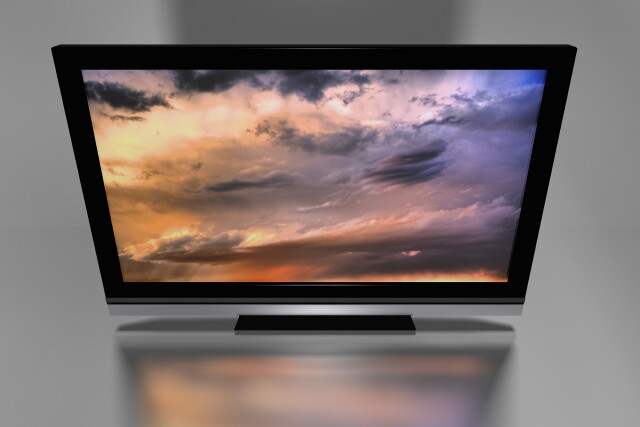Pearl TV Puts the ATSC 3.0 Pedal to the Test Metal

As television stations and station group owners assemble in Las Vegas this week for the National Association of Broadcasters convention, the NAB Show, one question appears sure to dominate the conversation: Are we on track to deploy a new portfolio of services among our viewers next year, embracing the 3.0 format approved by the Advanced Television Systems Committee? Pearl TV’s answer: You bet.
More than 220 stations nationwide, with owners ranging from Nexstar and Cox to Meredith and Graham Media, are associated with Pearl, now operating an ATSC 3.0 trial in Phoenix, Arizona. The organization is one of several expected to disseminate 3.0 progress updates or announce 2020 launch plans during NAB’s annual Las Vegas gathering.
“A lot is happening,” says Anne Schelle, Pearl TV’s Managing Director. “We’ve been working diligently on a transition of the major markets to enable services to be on-air by 2020. Separately, we’re utilizing Phoenix as a test bed to develop the broadcast service, the basic TV service, ensuring that the broadcast transmission chain and TV sets all work together, so when consumers go to retailers in 2020, they’re getting a product that works.”
Schelle believes the implementation of ATSC 3.0 will happen in stages. At first, stations will offer TV networks transmitted in ultra-high-definition (4K format) and/or high dynamic range picture quality, plus graphic interfaces or program guides, giving viewers easier access to individual programs. From that basic offering, other features, from interactive programming and advertising to severe weather updates, will flourish.
In quick order, because ATSC 3.0 can handle linear TV channels, web content and services or apps deliverable to smart TV sets and TV-connected devices simultaneously through Internet protocols, look for the kind of feature creativity generated by the iPhone or iPad. “This is not a static platform,” Schelle explains. “There will be open APIs for developers to come in and create applications that can ride on top of [other] capabilities. You can imagine all kinds of things.”
Before imaginations can be put in motion, stations must get their basic ATSC 3.0 abilities in order. That’s what Pearl is undertaking through its Phoenix prototype. At an undisclosed location, various transmission systems, middleware, compatible TV sets and set-top boxes undergo tests for signal and picture quality, and the ability to work alongside a TV station’s current transmission technology, known as the 1.0 standard. More than a dozen technology players, including Samsung, LG and Sony, are participating in the trial.
Pearl’s initiative also covers signal security and how stations originate ATSC 3.0 from their technical facilities. “It’s all about the background that’s not visible to consumers, making sure they get a seamless, high-quality experience,” Schelle continues. “For the stations, we’re developing guidelines and methodologies that enable [them] to efficiently and effectively launch. This is a broad-scale ecosystem … and we want to get standardization across the industry.”
Local consumers are invited to stop by the test facility, check out specific features and offer their reactions. So far, what people like most about 3.0 depends on their demographic background and viewing habits, Schelle says. Beyond the upgraded picture quality and advanced interface, viewers watching a lot of TV are very interested in a choice of audio tracks, such as multiple language selections or supplementary podcasts about the show on display. Millennial and Generation Z visitors express desires for interactivity, or the ability to start a program over from the beginning.
Schelle gets excited about the ability to present interactive, multi-player games, and bet on sports through ATSC 3.0. “We did some testing with PBS on a kids’ game,” she says. “The parents were highly engaged with it. They want their kids to have lean-forward experiences with educational content. They want us to bring this on.”
A number of advertising industry officials have visited the Phoenix test site, coming away pleased with what they witnessed. “They saw that you could easily click on a link to an ad for further information on the product [or order it on the spot],” Schelle adds. “Again, this infrastructure is built for that.”
As the trial moves forward, Pearl’s station affiliates are reaching the conclusion that ATSC 3.0 deployment will play a key role in maintaining or expanding their livelihood in a transforming media environment. In Schelle’s thinking, 3.0 will serve as the backbone of their operation, connected with other outreach ventures, creating and distributing content nationally through smart TV sets and devices or launching series on Facebook Watch and other smart TV-centric services.
Whatever gets announced this week at NAB Show in Las Vegas, Schelle is confident that around the nation, ATSC 3.0 will come into consumers’ lives next year. Station owners “want to see 3.0 be successful,” she says. “They understand the need to move forward and innovate. Their infrastructure needs to be upgraded and see great promise here, while still committed to their legacy business. That’s not an easy thing to do for these companies. They are placing bets on 3.0 in the right ways.”
Click the social buttons above or below to share this content with your friends and colleagues.
The opinions and points of view expressed in this content are exclusively the views of the author and/or subject(s) and do not necessarily represent the views of MediaVillage.com/MyersBizNet, Inc. management or associated writers.


